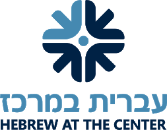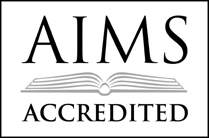Students Build Miniature Mishkan, Enhancing In-Depth Study of Shemot
May 22, 2019 by
Seventh grade students built a mini-Mishkan as part of our learning the end of Sefer Shemot. First, we were assigned partners and objects to research and build. Next, we looked through the last two parashiot in Shemot, Vayakhel and Pekudei, to find out how our objects looked and the ways they were built. To ensure we were building each item accurately, we took notes on everything, including the measurements that our ancestors used back in the time of the Mishkan. Later, we needed to scale everything down by 1 amma (cubit) to 1 cm. When we concluded all the necessary research and our work was checked by G’veret Hornstein, we began the process of creating instruction manuals for each object in the Mishkan. Our manuals include step-by-step instructions on how to create each object. Although back in the time of the Torah they didn’t have 3D printers or laser cutters, we made our instructions for someone who would make it nowadays. After we turned in our instruction manuals, we started the process of building our object.
There were two main categories of objects that students were assigned to build for the Mishkan – the clothing of the Kohen and the stationary items in the Mishkan, such as altars and curtains. The student groups who made the clothing for the Kohen didn’t need to scale everything down in the same way because we put all of our final products on a Ken doll, so all we had to do was use the measurements of the doll’s head and body to design and produce our objects. But that proved to be more challenging than it first appeared. It was hard because some of the items were extremely small and creating them was technically difficulty; in addition, it was also hard to make these because the items had to fit the Ken doll exactly so even slight errors in measurement meant that the team had to redo their projects (which happened a few times). The student groups that didn’t work on the clothing worked on all the stationary objects in the Mishkan. These include the walls, poles, and curtains. These groups had completely different tasks to accomplish, but they shared some common challenges. One of the main challenges these groups faced involved precision in spacing and effective communication with other student groups. Since most things in the Mishkan were very close together, every group had to adhere to the exact measurements or else the Mishkan would not fit into place.
Overall, we think this was an amazing learning project with new experiences, realizations, discoveries, challenges, and more. We loved all the hands-on learning that was part of this project – it was so much fun making our objects and Kohen-fashion. In addition to the learning from our Judaic Studies classes, we got to use our research, writing, design, and engineering skills to create the manuals and the mini-Mishkan. And when we faced challenges, we got to work on our problem solving skills, and on working collaboratively with our partners and with other groups to address these challenges. Thank you so much to our teachers for helping and guiding us through this process.






